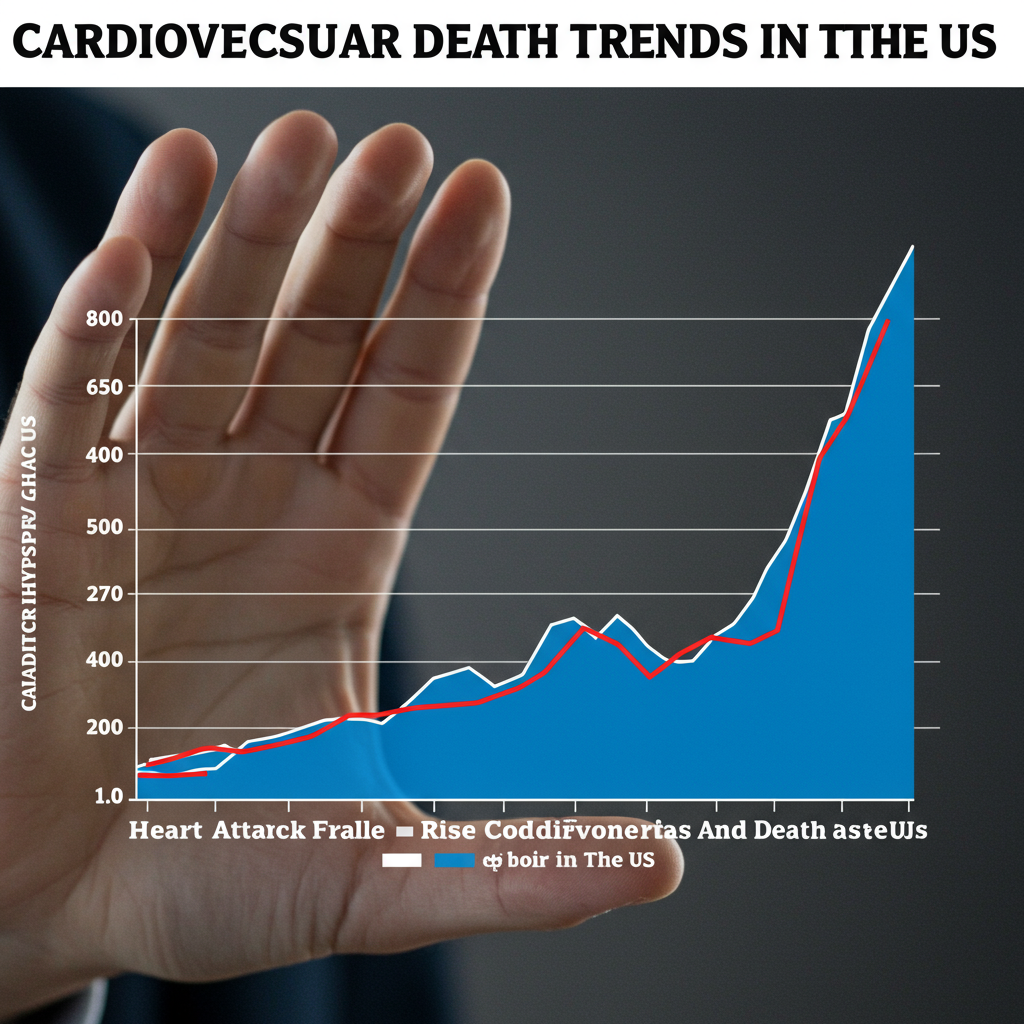Could the number on your scale be misleading you about your health risks? For decades, Body Mass Index (BMI) has been the go-to metric. It’s a simple calculation of weight relative to height. Doctors use it to categorize individuals as underweight, normal weight, overweight, or obese. However, emerging research reveals a significant limitation: BMI is a poor predictor of mortality risk. A groundbreaking study from the University of Florida highlights a far more accurate indicator hiding in plain sight – your body fat percentage. This research suggests it’s time to rethink how we assess health risks tied to body composition.
The End of the Line for BMI?
BMI’s simplicity has been its strength and its weakness. Introduced centuries ago, it became a standard tool in the 1980s. Its ease of use made it practical for large population studies and quick clinical assessments. Simply divide a person’s weight by their height squared. The resulting number places them into a category. This quick snapshot has helped identify potential risk groups.
However, experts have increasingly questioned BMI’s validity for individuals. Its most glaring flaw is its inability to distinguish between muscle mass and fat mass. Muscle is dense tissue. It weighs more than fat by volume. This means a highly muscular person, like a bodybuilder or athlete, can have a high BMI. Their BMI might categorize them as “overweight” or “obese.” Yet, their body fat percentage could be perfectly healthy. Conversely, someone with a “normal” BMI might carry a high proportion of fat and low muscle mass. This condition is often called “skinny fat” and is linked to various health issues. Muscle mass is vital for metabolism, strength, and overall health. Failing to account for it makes BMI an unreliable measure for individual health status and risk.
Body Fat Percentage: A Sharper Predictor
A recent study published in the Annals of Family Medicine offers compelling evidence. Researchers at the University of Florida analyzed data from over 4,200 U.S. adults. They followed these participants for 15 years. The study compared the predictive power of BMI versus body fat percentage for mortality risk.
The findings were stark. Body fat percentage proved “far more accurate” than BMI at predicting a person’s likelihood of death over the 15-year period. Individuals with high body fat levels faced significantly higher risks. They were found to be 78% more likely to die during the study timeframe compared to those with healthy body fat levels.
A Critical Link to Heart Health
The study also specifically examined the risk of death from heart disease. This is a major health concern globally. The results further underscored the importance of body fat. Participants with high body fat were more than three times as likely to die from heart disease. This highlights a crucial connection between body fat levels and cardiovascular outcomes. Simple BMI was deemed “entirely unreliable” for predicting the risk of death from any cause over the 15 years. This casts serious doubt on its continued use as a primary health indicator.
Dr. Frank Orlando, a senior author of the study, emphasized this point. He works as a family physician. He sees patients daily with conditions linked to obesity. He noted that while BMI is a routine measure, it doesn’t offer the same accuracy as vital signs. The study strongly suggests it’s time for a superior alternative.
Why This Difference Matters
BMI’s limitations extend beyond just misclassifying muscular individuals. High body fat, particularly visceral fat surrounding organs, is metabolically active. It releases inflammatory compounds and hormones. These contribute directly to conditions like insulin resistance, type 2 diabetes, high blood pressure, and high cholesterol. These are all major risk factors for heart disease and other chronic illnesses.
Recent data reveals a concerning shift in heart disease deaths. While deaths from acute heart attacks have plummeted thanks to medical advancements, deaths from other heart conditions are rising. These include heart failure, arrhythmias (irregular heartbeats), and hypertensive heart disease (caused by high blood pressure). This increase is strongly linked to rising rates of obesity, type 2 diabetes, and high blood pressure in the population. Predicting risk for these chronic, progressive conditions is now more critical than ever. Body fat percentage appears to be a better marker for this underlying metabolic dysfunction than a simple height-to-weight ratio.
Measuring Body Fat: Practical Options
How is body fat percentage measured? The University of Florida study used Bioelectrical Impedance Analysis (BIA). This method involves sending a small, harmless electrical current through the body. Fat tissue resists the current more than muscle or water. A BIA device estimates body fat based on this resistance. BIA is more accessible and affordable than some other methods. Many scales and handheld devices use BIA technology.
Another method is DEXA (dual-energy X-ray absorptiometry). DEXA scans are considered highly accurate. They can provide detailed body composition information. However, they are expensive and require specialized equipment. They are not practical for routine doctor’s office visits.
While BIA isn’t as precise as DEXA, the study suggests it is accurate enough to be a valuable clinical tool. It offers a significant improvement over BMI in accessibility compared to DEXA. This makes it a potential candidate for wider adoption.
Navigating the Shift: Challenges and Future
Transitioning away from a long-standing standard like BMI presents challenges. One limitation noted by the researchers is the lack of standardized thresholds for healthy body fat percentages. Unlike BMI ranges, widely accepted body fat ranges are still evolving. More research is needed to establish clear guidelines across different age groups and demographics. The study itself had limitations. It focused only on predicting death and didn’t analyze the onset of specific diseases like cancer or heart failure. It also relied on data from a specific age range.
Despite these hurdles, the call for change is clear. Dr. Stephen Vogel, another family medicine physician, agrees that BMI is useful for populations but not precise for individuals. He believes the study reinforces the need for new, consistent, and low-cost standards. These standards should provide better individual nuance.
Towards More Informed Health Decisions
Adopting body fat measurement as a standard would offer more detailed information. This could empower both doctors and patients. They could make more informed decisions about health interventions. This shift aligns with the broader move towards more personalized medicine. Just as continuous glucose monitors offer more dynamic data than single blood sugar tests for diabetes risk, body composition analysis offers a more dynamic picture than static BMI.
The researchers are optimistic. They hope validated body fat percentage standards could integrate into routine medical care. This change could fuel better patient-doctor discussions. It could also inform public health initiatives. The ultimate goal is to improve overall population health. Focusing on actual body composition, rather than a simple weight ratio, seems a logical step towards achieving this.
Frequently Asked Questions
Why is BMI considered flawed for predicting health risk?
Body Mass Index (BMI) is calculated using only weight and height. Its primary flaw is its inability to differentiate between muscle mass and fat mass. High muscle mass increases BMI, potentially classifying a healthy, muscular person as overweight or obese. Conversely, someone with a “normal” BMI could have low muscle and high body fat, a less healthy composition. This lack of detail means BMI doesn’t accurately reflect the actual body composition linked to metabolic and chronic disease risks, unlike measuring body fat directly.
How can I find out my body fat percentage?
Several methods exist to measure body fat. The University of Florida study used Bioelectrical Impedance Analysis (BIA). This is available in some scales and handheld devices. It’s relatively accessible and affordable. More accurate methods include DEXA (dual-energy X-ray absorptiometry) scans, which are detailed but expensive and less common. Skinfold calipers and hydrostatic weighing are other methods, though accuracy varies. Discuss options with your doctor to see which measurement method might be suitable for you.
What health risks are more accurately predicted by body fat than BMI?
According to the University of Florida study, body fat percentage is a significantly better predictor of overall mortality risk than BMI. Over a 15-year period, individuals with high body fat were 78% more likely to die than those with healthy levels. Crucially, high body fat was over three times more likely to predict death from heart disease. This highlights the strong link between excess body fat and serious health outcomes, particularly cardiovascular issues, which BMI fails to capture with the same accuracy.
The Path Forward
The University of Florida study adds significant weight to the argument against relying solely on BMI. It makes a strong case for incorporating body fat percentage into health assessments. While more research is needed to standardize body fat thresholds and integrate measurement methods like BIA into routine care, the message is clear. Understanding your body composition, particularly your body fat percentage, could offer a much clearer picture of your long-term health risks than BMI alone. This shift promises more precise health guidance and potentially improved health outcomes for individuals.



